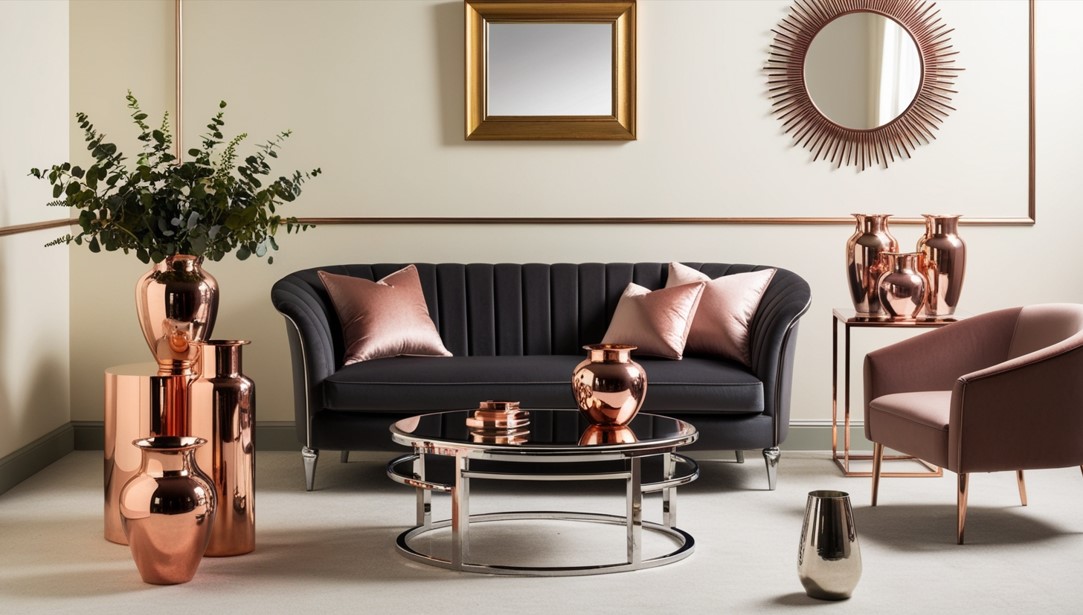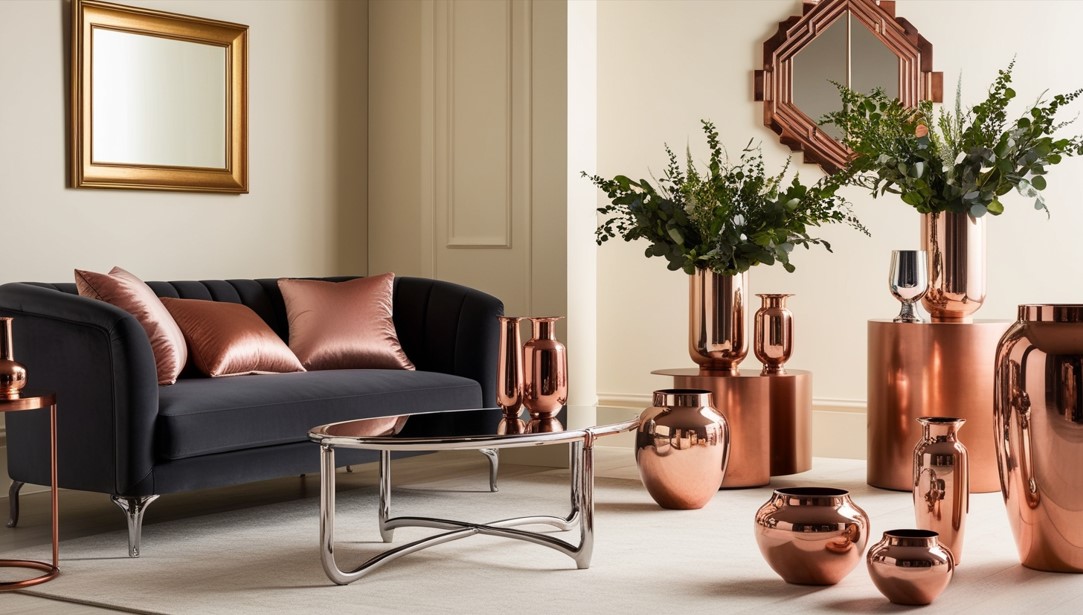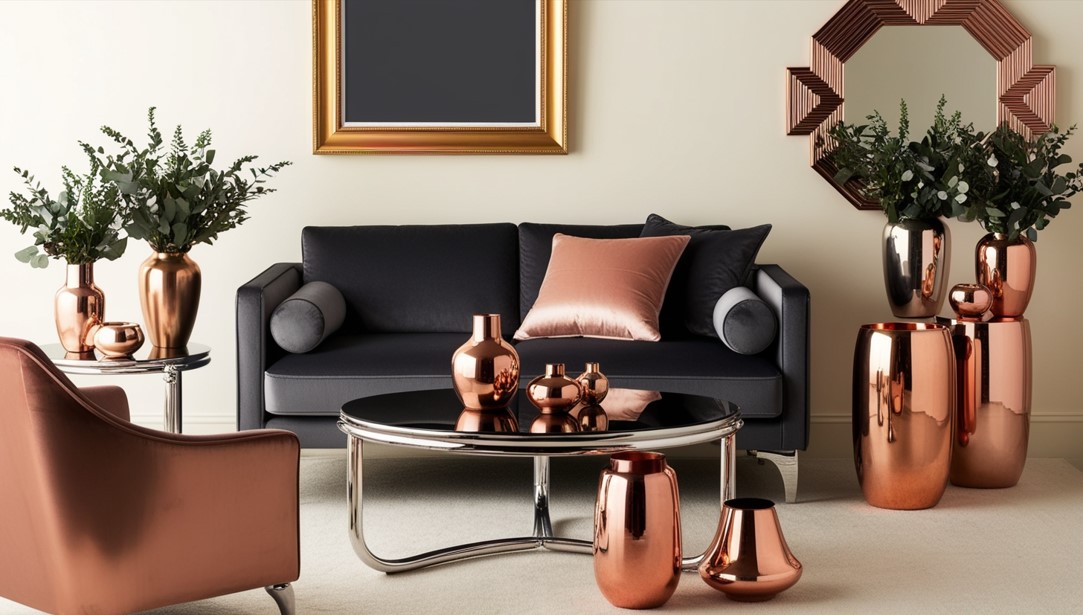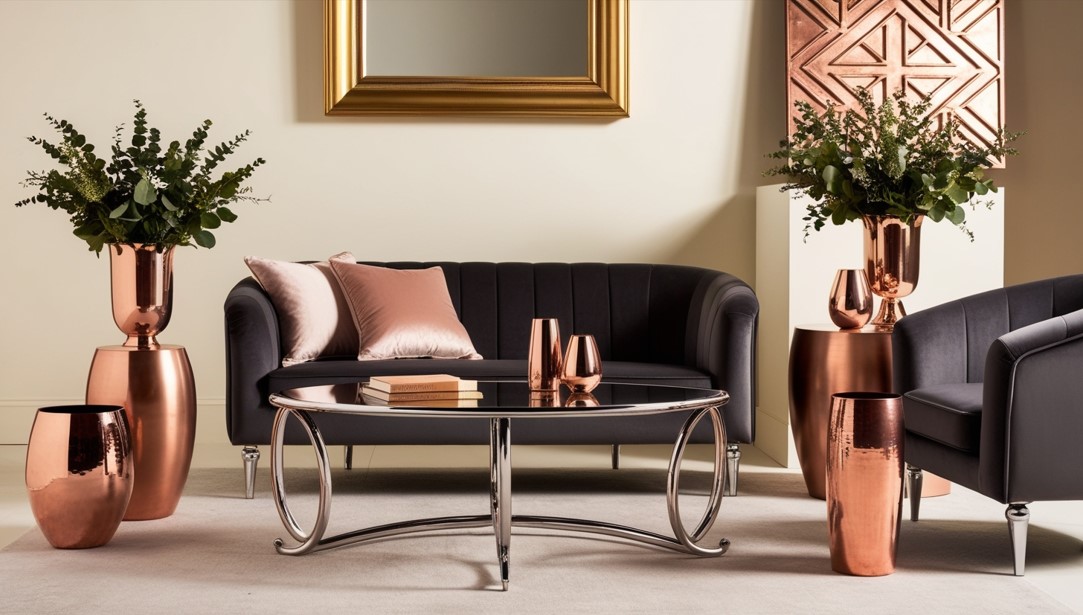Blending metallic finishes has become a bold design trend in modern interior styling. For decades, the design world emphasised sticking to a single metal tone—think all brushed nickel or all chrome. But today’s homeowners and designers embrace a richer, more layered approach by learning how to mix metals in home decor. The result? Spaces that feel dynamic, personalised, and professionally styled.
This in-depth guide will explore the art and science of mixing metals in your home. You’ll discover expert tips on creating a harmonious look, avoiding common mistakes, and room-by-room ideas for incorporating multiple finishes. Whether decorating a small apartment or revamping an entire house, this article will empower you to make metallic magic happen.
Why Mix Metals in Home Decor?
Combining different metals creates a visual balance that adds depth, texture, and sophistication. Like layering textures and colours, mixing metallic tones breaks the monotony of uniform finishes and introduces character and contrast.
Here are a few reasons to embrace this trend:
- Adds Dimension: Multiple finishes give your room a multi-dimensional feel, making it feel more dynamic and thoughtfully designed.
- Balances Warm and Cool Tones: Warm metals like gold and brass bring richness, while cool metals like chrome and stainless steel offer sleekness. Mixing both brings harmony to your palette.
- Makes Your Space Feel Curated: When done right, mixing metals looks intentional and stylish, not accidental.
- Enhances Versatility: You’re not locked into one type of finish. This flexibility is beneficial when updating hardware or lighting without replacing everything.

The Basics of Mixing Metals
Before you start swapping out fixtures and decor, it’s essential to understand the basic principles of mixing metals:
1. Choose a Dominant Metal
Start by choosing one metal finish to lead the look. This metal will comprise about 60–70% of the metal elements in your space. For example, you might choose polished nickel as your primary metal, then add matte black or brass accents.
2. Stick to Two or Three Metals Max
Limit your mix to two or three metals to avoid visual chaos. A trio of metals can work beautifully if one dominates and the other are used as accents.
3. Balance Warm and Cool Tones
Mixing warm metals (gold, brass, copper) with cool metals (chrome, silver, nickel) adds contrast and sophistication. Use neutral elements—like wood, black, or white—to act as a bridge between the tones.
4. Use Consistent Finishes
Pay attention to the finish of the metal. Mixing too many types—polished, matte, antique, brushed—can create a disjointed look. You can mix finishes, but do so with intention. For example, brushed nickel pairs well with antique brass, while polished chrome complements gold.
5. Repeat Each Metal at Least Twice
To make every metal feel like part of a cohesive design, repeat each finish at least twice in the space. This repetition reinforces the intentionality of your choices.

Room-by-Room Guide to Mixing Metals in Home Decor
Living Room
In living rooms, start with lighting or hardware as your primary metal—maybe a brushed brass chandelier—then add smaller accents like chrome picture frames, black metal side tables, or silver candle holders.
Design Tips:
- Pair a gold-framed mirror with black metal wall sconces.
- Use a mix of metal finishes on curtain rods, light fixtures, and accessories.
- Balance metals with soft textures like velvet or linen for contrast.
Kitchen
Kitchens are prime spaces for mixing metals. Think stainless steel appliances, brass hardware, and matte black light fixtures.
Design Tips:
- Pair brushed nickel cabinet pulls with a brass faucet.
- Use copper or bronze accents for open shelving or pendant lights.
- Introduce chrome stools or metal containers for added texture.
Bathroom
Choose a primary finish for plumbing (like polished nickel) in bathrooms, then introduce contrast through lighting, towel bars, or cabinet hardware.
Design Tips:
- Mix black faucets with gold-framed mirrors.
- Use chrome lighting with brushed gold drawer pulls.
- Consider mixed-metal towel racks for subtle variety.
Bedroom
Bedrooms are fantastic for soft, subtle metal mixes—think antique gold with matte black or silver.
Design Tips:
- Brass lamps paired with silver drawer pulls or iron bed frames.
- Mirror frames, picture frames, or light switch plates in mixed metals.
- Layer metallic fabrics (like gold-thread pillows or throws) for a luxe feel.
Entryway
Make a bold first impression with contrasting metals in your entryway.
Design Tips:
- A gold mirror with black console table hardware.
- Coat hooks in brushed nickel, paired with a copper umbrella stand.
- Metallic wall art or signage in two complementary tones.
Common Mistakes to Avoid
Even with the best intentions, it’s easy to make mixing mistakes. Here’s what to watch out for:
- Random Placement: Avoid scattering different metals haphazardly. Each finish should have a defined space or purpose.
- Overmixing: Three is the absolute maximum. Two metals are easier to manage and usually offer plenty of variety.
- Ignoring the Room’s Style: Match your metals to the overall aesthetic. Industrial spaces may call for raw or blackened metals, while glam spaces lean toward polished brass or gold.
- Clashing Undertones: Some metals carry strong undertones (e.g., pinkish copper, yellowy gold). Make sure these undertones don’t fight with other elements in the room.
Expert Styling Tips
- Use Metal Furniture as Anchors: Items like coffee tables or shelving units help ground your metallic palette.
- Layer with Natural Elements: Wood, stone, and leather soften the look and help unify different finishes.
- Play with Reflections: Metallic finishes reflect light. Position them near windows or lamps to create added depth.
- Mix in Texture: Metal mesh, hammered finishes, and perforated metal can offer variety without switching tones.

FAQs About Mixing Metals in Home Decor
1. Can I mix gold and silver in the same room?
Yes! Gold and silver create a luxurious contrast. Use one as your primary metal and the other as an accent. Neutrals like black and white help bridge the gap.
2. What’s the best way to start mixing metals if I’m new to design?
Start small. Add a new metal through accessories like picture frames, lamps, or hardware. See how it feels in your space before making bigger changes.
3. Is black considered a metal in decor?
Modern design often treats matte black and iron finishes as metal tones. They act as neutral grounding elements that mix well with warm and cool metals.
4. Should all metals in a room match?
Not necessarily. Uniform metals can feel flat or overly matchy. A mix adds interest and texture—just be intentional and balanced.
5. Can I mix metals with other textures like wood or glass?
Absolutely. Mixing wood, glass, stone, and metal adds layers and richness to your decor, and it’s encouraged for a well-rounded aesthetic.
Final Words
Mastering how to mix metals in home decor is a design skill that can elevate your interiors from average to awe-inspiring. It’s about more than just combining finishes—it’s about creating visual harmony, embracing contrast, and showcasing your personality. You can confidently create curated, cohesive, and effortlessly stylish spaces by understanding the basics, experimenting with balance, and trusting your eye.
So pair that brass lamp with a silver-framed mirror, mix matte black with polished gold, and let your home reflect the richness that only a thoughtful blend of metals can bring.

